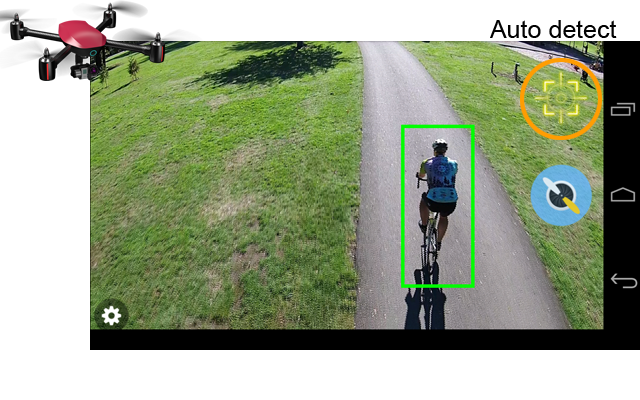The Mind4 quadcopter by Shanghai based startup, AirMind, has a funding target of $100,000 on crowd-funding website, Kickstarter. The nimble device has already been dubbed the “stalker drone” in early media coverage due to its ability to film and follow a designated person or target.
While that’s not necessarily the most complimentary label, Mind4’s creators don’t see it as a snooper’s ideal gadget.
“This technology is actually not suitable for that kind of task,” said AirMind founder, Ning Lu because of its high visibility and the difficulty of operating incognito in a busy public space.
Rather, Lu sees the product being used by skiers, snowboarders, cyclists and the like to record awe-inspiring aerial shots of their daring activities.
“Mind4 is designed to be used to follow yourself, non-human being subjects such as animals, or in specific scenarios like film shooting, sports shooting etc. in relatively open area,”Lu said.
How does it work?
It uses what the promotional literature describes as the most “powerful processor” ever contained within a drone, the Mind4 syncs up with a specially designed Android smartphone app.
All a prospective user needs to do is open the app to make the drone take off. They then choose a target to follow via the camera on their phone and hit start.
Mind4 will then track the selected item from up to 20 meters (65 feet) above and at maximum distance of up to 50 meters (164 feet) behind using its autopilot feature.
It can also respond to human hand signals. Waiving a right hand will instruct the device to come closer, raising both hands will make it take a picture while pointing the ground tells it to land.
Reaching new heights
Ning Lu
Quadcopter drones with mounted cameras are already widely available but most require a remote pilot to guide them.
Some also use GPS systems to track subjects automatically, however Lu said such products are less reliable than Mind4.
“GPS-based following technology cannot ensure the subject is actually in that position (where the camera points)” as civilian GPS is often not precise, he said.
“The camera on the drone may be pointing to 20 meters away from the subject, which will be totally out of view,” he added.
By comparison, Mind4 uses computer vision technology which allows for a much more reliable image capture.
Then there is the potential of developing the technology that underpins the Mind4.
Lu describes plans to make the software the device runs on open source so that users can create their own, modified Android apps.
“With the power of developers all around the world the Mind4 can be boosted to (the) next level … much more friendly and smarter,” he said.
Lu and his colleagues are hoping to raise $100,000 on Kickstarter before December 23 to help the device reach the next stage of its development.
Source: CNN

